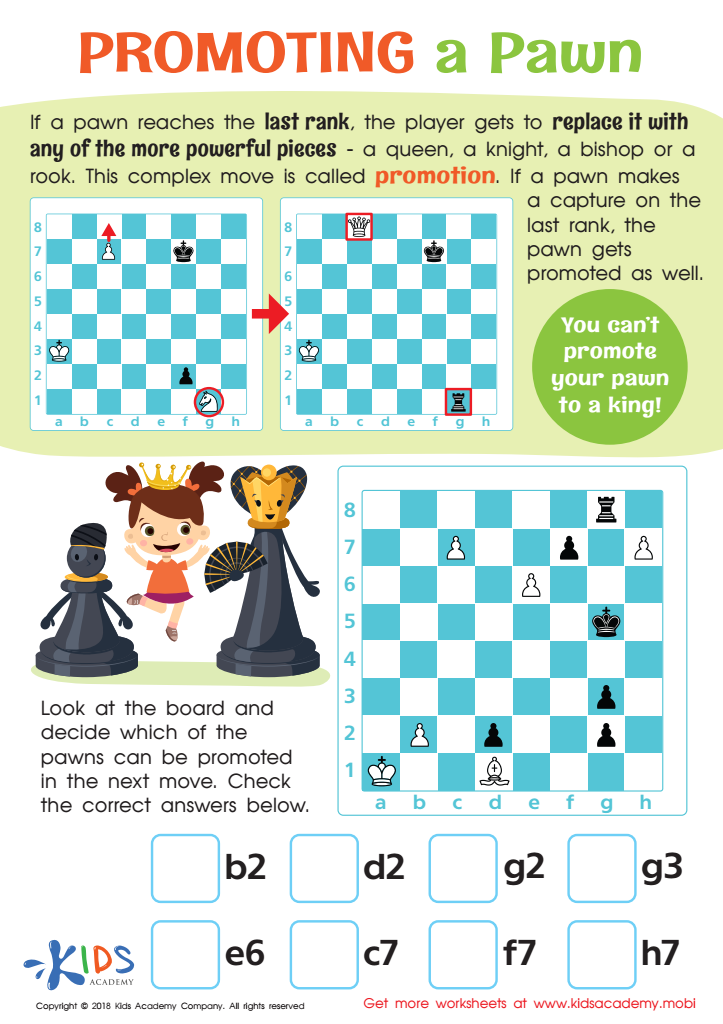Pawn promotion is one of three special rules in chess. The others are castling and en passant.
First, I discuss some basics about pawn promotion for players just learning the game. Then, a section for tournament players. If you play in FIDE-rated events, don’t skip the last section!
Things to Remember about Pawn Promotion

This is one way to think of pawn promotion!
- Only pawns can promote.
- When a pawn reaches the end of the board, it must become a different piece.
- You must promote to a queen, rook, bishop, or knight. You cannot get a second king, and you cannot leave a pawn on the last rank.
- The queen is the most powerful piece in chess, so she is chosen most often by far. That is why promotion is sometimes called queening a pawn.
- The pawn is completely removed from the board, and the new piece replaces the pawn on the queening square, not a starting square!
- Captured units have nothing to do with your choice of promotion piece. If you still have a queen, you can get a second queen. You could have three rooks or five bishops, for example, if you promote enough pawns.
- Replacing a pawn with an upside-down rook (“inverting a rook”) is understood to be a new queen. But see below if you play in tournaments!
Casual players can stop here. Tournament players, read on…
Pawn Promotion in Tournaments
- You are allowed to stop clock and get a tournament director or arbiter to assist you in locating your desired promotion piece if one is not nearby.
- How to Notate. A white pawn moving from e7 to e8 to become a queen is written e8Q.
Special Rules for FIDE-rated Events
As I recently learned, promotion rules in international play have been updated:
- If you promote a pawn, leave it on the last rank without replacing it, and press your clock, this is an illegal move. Your opponent receives two additional minutes on their clock, and the pawn is replaced with a queen.
- Remember: a player loses the game on a second illegal move!
- The promotion piece is determined when it touches the board — literally. If you place a rook on the board upside down (intending it to be a queen), the arbiter will turn it right-side-up and it will become a rook!
That pretty much covers it. If you have questions or comments, don’t be shy! I will provide as much assistance as I can.
